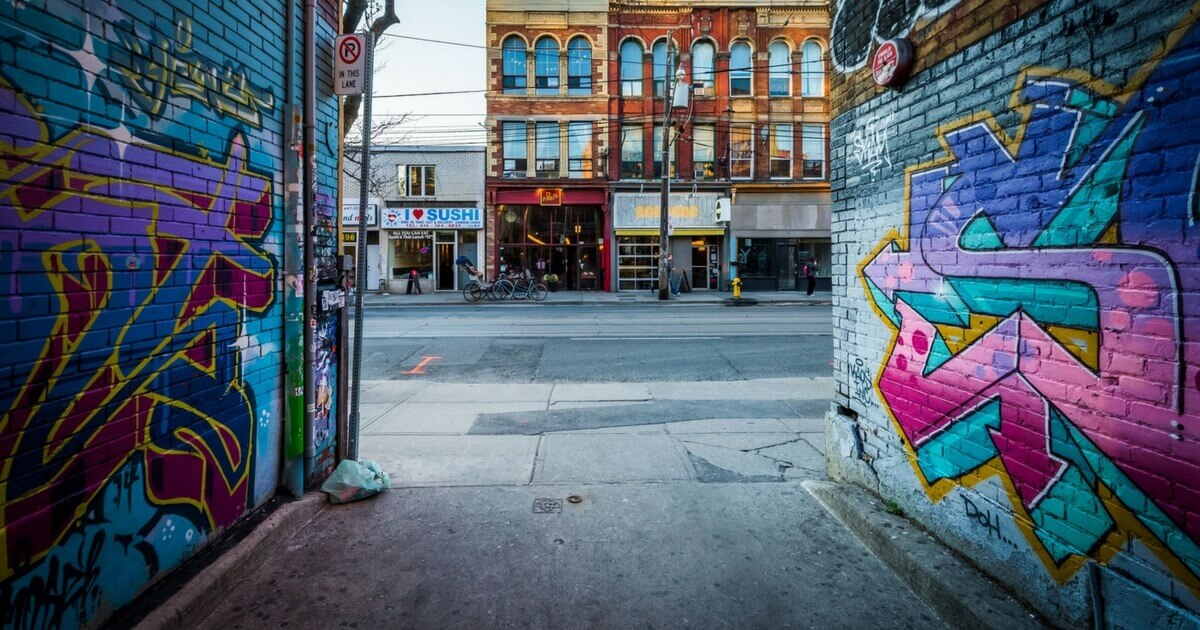Graffiti is commonplace around the world and has even gained street art status in the eyes of millions. But unless you’ve given outright consent, any graffiti on your property is nothing but vandalism.
Although most graffiti can be removed using soapy water or basic cleaning solutions, some amount of damage to the surface is unavoidable. This damage can even be permanent as the surface’s character can change as a result of the paint’s action. Because of this, permanent graffiti removal can become very hard, if not impossible.
That said, timely action can get you significant success in removing graffiti. Here we look at how to remove graffiti from different surfaces.
METAL SURFACES
Paint can be cleaned off metal surfaces more efficiently than all other surfaces, except glass. The most effective way is to scrub the paint off using a paint thinner. Commonly available paint thinners include lacquer thinner, mineral spirits and acetone. You can use off-the-shelf graffiti removal products for the purpose as well.
You can also try removing the paint by scrubbing with bronze or steel wool or even light sandpaper. If none of them work, a high pressure power-wash should help matters.
WOODEN SURFACES
You could try removing the graffiti by wiping the wooden surface using mineral spirits, provided the wood is not the weathered kind and has been sealed with stain, sealer or paint. As with metal surfaces, you could also try a power-wash at high pressure for wooden surfaces. However, ensure the pressure does not cause the paint to go deeper into the grain as that would make it almost impossible to remove the graffiti.
If neither of those approaches work, sanding the affected areas of the wooden surface and repainting them is the only viable alternative.
PLASTIC SURFACES
Most people prefer to replace the affected part, rather than try removing the graffiti, as plastic is cheap. However, if replacing is not possible or expensive, you can use highly fine bronze or steel wool to rub away the paint. Avoid paint thinners or other graffiti removal chemicals as they cause the plastic to go soft, which can lead to permanent tackiness or clouding.
GLASS SURFACES
As mentioned previously, removing graffiti is easy when it’s a glass surface. Almost all paint can be scraped off the glass surface using a fine razor blade. Another useful method is to use highly fine bronze wool and water to softly rub off the paint. Paint thinners are also quite effective at dislodging paint from glass surfaces.
MASONRY
The most effective way to remove graffiti from masonry is to give it a power-wash at high pressure. If that doesn’t work, sand-blasting should do the trick. Sand-blasting is a process that uses a jet of sand to clean a surface. Powered by steam or air, sand-blasters are highly effective at removing paint off masonry. However, it needs to be done carefully because if the sandblasting tip remains at one point for too long, it can lead to permanent etching of the surface.
There are also certain industrial graffiti removal products that you can use to remove the graffiti from a stone, concrete or brick surface. However, these products require careful handling and are best left to graffiti removal professionals.
OTHER SOLUTIONS
While removal is the most obvious way to deal with the menace of graffiti, it can fall short of your expectations under certain circumstances. In such a scenario, there are other things you can do to deal with graffiti.
1) Painting it over
The first thing is to paint over the graffiti. If you go with painting, it’s recommended to either paint the wall straight from top to bottom or repaint it entirely. That is because matching the colour of your building is a complicated task. Mismatched colours, apart from dragging down your building’s look, also serve as continuing proof of graffiti.
Secondly, if your building uses a lighter colour for its surface, make sure to paint multiple coats over the graffiti. That is the only way to ensure the graffiti’s shadow is not visible.
Thirdly, if graffiti is a chronic problem in your area, you can consider a protective coating while repainting your building. Doing so would make it easier to remove graffiti the next time it happens.
2) Non-chemical graffiti removal agents
You can also try graffiti removal products that do not contain any chemicals. These products are based on citrus extracts and completely biodegradable. You can buy these products at any neighbourhood hardware store. Citrus based graffiti removers can be safely applied to all painted or natural surfaces. However, some types of plastics might not react well to them and suffer cloudiness or discolouration.
Removing graffiti is not easy, especially when the surface involved is rough or porous. While you can try scrubbing out the paint using some of the methods outlined above, for outer surfaces of your building its better if you go with a professional graffiti removal service.


